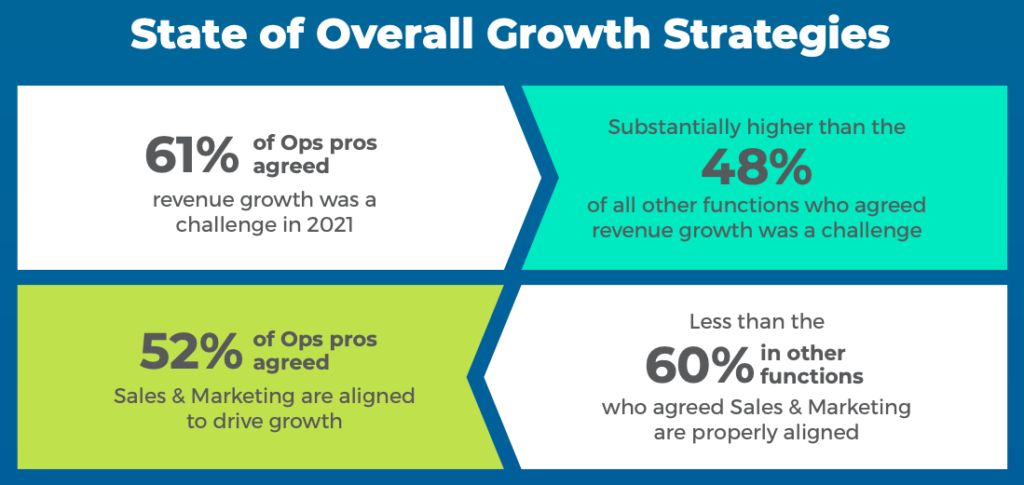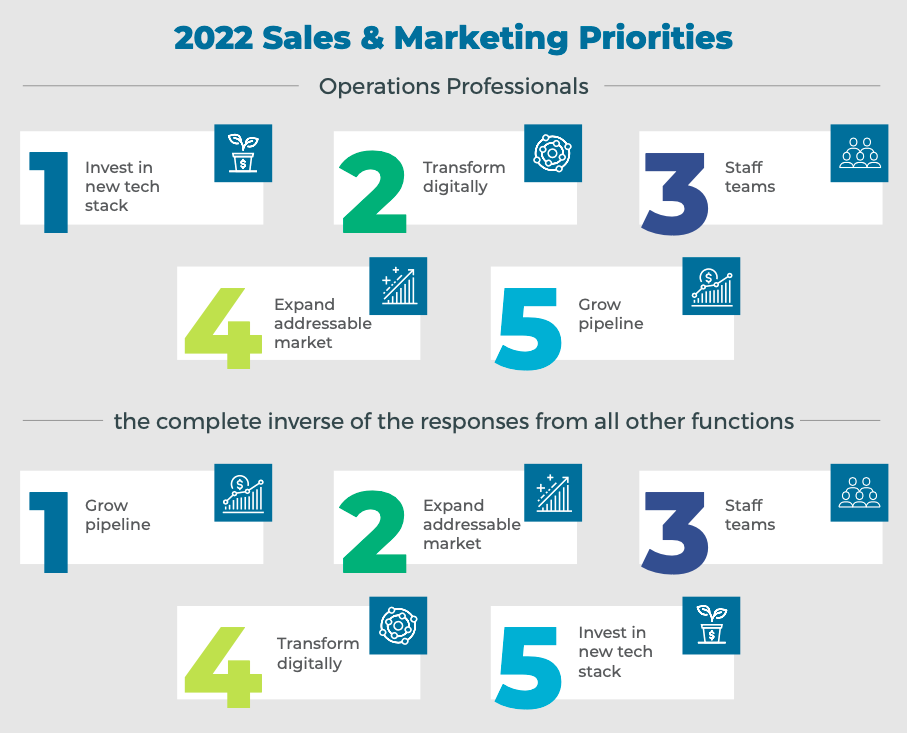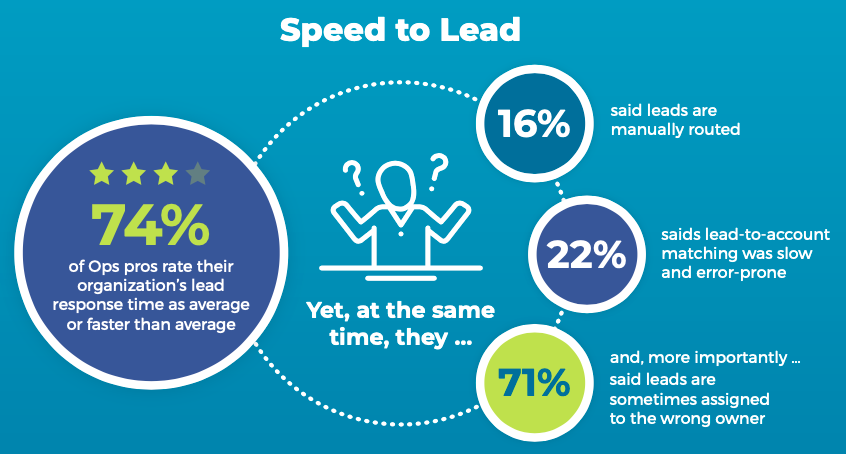In December 2021, LeanData, collaborated with Sales Hacker, Heinz Marketing and Outreach to conduct the State of Lead Management study, surveying all functions of revenue team professionals. In all, over 1,700 survey responses were collected, and the findings of the study were recently published in The State of B2B Lead Management 2022 report.
At a high level, the findings of the survey were enlightening. Overall, revenue leaders felt optimistic about 2022 and their short-term horizon. Functional walls seemed to be crumbling down within the team. Digital transformation was moving along, although lead management was still marked by many manual processes. And, of course, everyone wanted more sales pipeline.
Regarding the sales pipeline, some things will never change, right?
Digging deeper through the demographic data though, another story started to emerge from the data. Operations professionals, those in Sales Ops, Marketing Ops and RevOps, had much different perspectives on 2021 and what needs to happen in 2022.
Ops view the state of lead management much differently
Was revenue growth a challenge for your team in 2021? It might depend upon whom you ask.
In the State of Lead Management survey, 61 percent of Ops professionals agreed revenue growth was a challenge, a much different perspective than the respondents from every other functional area, who pegged it at just 48 percent agreement.

Within the “other” category were Sales professionals, and in that cohort, only 53% agreed revenue growth was a challenge in 2021, this despite the fact that Xactly reported average B2B SaaS sales quota attainment in 2021 was only 61 percent.
It would seem there’s a distinct opportunity in setting goals among the Sales team.
There was also a significant difference in how Ops viewed alignment between Sales and Marketing. Fifty-two percent of Ops professionals agreed the functions are aligned for growth. However, 60 percent, a significant uptick, of Sales and Marketing respondents agreed there was effective alignment, a number that was consistent among other survey respondent cohorts.
So, why the more pessimistic outlook on alignment from Operations?
Operations have a different perspective on priorities
As a cohort, Operations professionals rank their highest priorities for sales and marketing in 2022 as follows:
- Invest in new tech
- Transform digitally
- Staff teams
- Expand addressable market
- Grow pipeline
Interestingly, it is the exact polar opposite, the complete inverse, of the perceptions of all the other cohorts.

When it comes to strategic planning and tactical execution for 2022 and beyond, ensure your revenue team adequately talks out the varying opinions and ideas of each of its functions.
Speed to lead gets even more confusing
Interestingly, the 2022 State of B2B Lead Management paints a confusing picture of lead response time, also known as “speed to lead.” It continues a trend of increasing fuzziness around this critical metric.
Everyone wants a quick speed to lead. How fast, I’m not certain everyone knows in terms of minutes and seconds (or, for some, hours, days and weeks). Almost everyone can agree they just want to — need to — be faster than their direct competitors when responding to leads.
In the survey, 74 percent of Operations respondents rated their lead response time as average or faster than average, a percentage relatively consistent across all cohorts.
Yet, what wasn’t consistent was that answer as compared to the answers of other questions. In the Ops cohort, 16 percent said leads are manually routed, and we all know manual routing is not only error-prone, but that it can’t scale efficiently and be quick at the same time.
Twenty-two percent of Ops respondents said lead-to-account matching was slow and error-prone, and that absolutely, positively hampers speed to lead. Lastly, 71 percent of Ops respondents said leads are sometimes assigned to the wrong owner. Rework simply kills lead response time.

Clearly there’s room for improvement. Yet, everyone feels as though they’re in the same boat.
The organizations that figure out speed to lead first will find themselves with a unique competitive advantage.
Summary
“Diff’rent strokes for diff’rent folks,” or so it has been said. Depending on where you sit on the revenue team, your view of the state of B2B lead management will differ.
For a comprehensive look at the overall perception of lead management, be sure to read The State of B2B Lead Management 2022 report. Then, take a look at the infographic that highlights just the view of the Operations cohort, “A Different Take: How Ops View the State of Lead Management 2022.”
With that information, facilitate a discussion with your revenue team members on what they agree with and on what they might not agree. Your growth strategies will be set up for greater success with everyone on the same page of the playbook.










